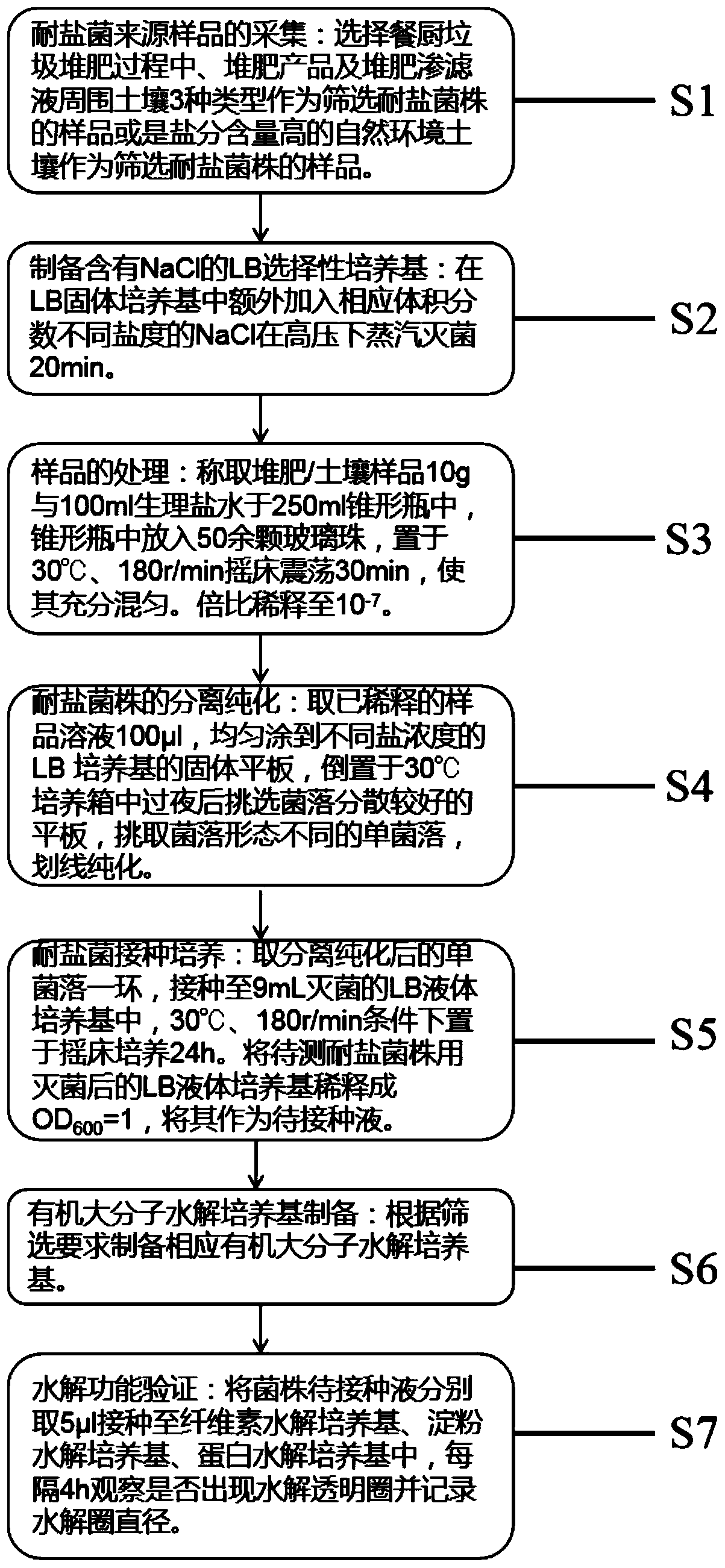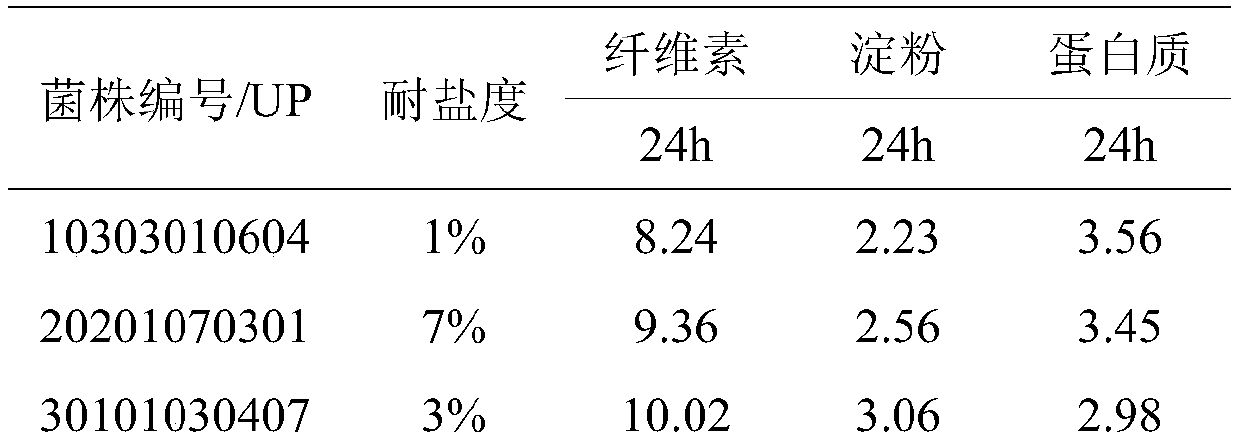Screening method of salt-tolerant strain capable of rapidly degrading organic macromolecules
A rapid degradation technology for organic macromolecules, applied in the field of microorganisms, can solve the problems of screening result errors, ignoring the screening of highly salt-tolerant strains, lack of screening of salt-tolerant strains, etc., and achieve the effect of improving screening efficiency
- Summary
- Abstract
- Description
- Claims
- Application Information
AI Technical Summary
Problems solved by technology
Method used
Image
Examples
Embodiment 1
[0030] Screening of salt-tolerant bacteria using food waste heaps as samples
[0031] S1. Collection of samples from the source of salt-tolerant bacteria: Select the sample for screening salt-tolerant bacteria during the composting process of kitchen waste, randomly select 5 points for the S type of each sample, use the quartering method, mix well, and put them in ziplock bags. The fresh compost samples should be removed from the debris with larger particle size and stored in a -4 ℃ incubator.
[0032] S2. Prepare LB selective medium containing NaCl: weigh 10g of reagent tryptone, 5g of yeast extract, 10g of NaCl, 1000ml of deionized water, 20g of agar powder, or directly use 40g of prepared LB medium reagent and add 1000ml of deionized The water is stirred until the solute is dissolved. Add additional NaCl 10g, 30g, 50g, 70g of volume fraction salinity (that is, corresponding to salinity 1%, 3%, 5%, 7%), adjust the pH to 7.0 with 5mol / L NaOH, and sterilize it by steam under ...
Embodiment 2
[0046] Screening of salt-tolerant bacteria using food waste compost products as samples
[0047] The screening method of this embodiment is the same as that of Example 1, the difference is that the sample type in step S1 is changed to a kitchen waste compost product, and 4 strains of salt-tolerant bacteria that can rapidly degrade organic macromolecules are obtained in this embodiment. The specific information The following table:
[0048]
Embodiment 3
[0050] Screening of salt-tolerant bacteria using food waste compost leachate soil as a sample
[0051] The screening method of this embodiment is the same as that of Example 1, the difference is that the sample type in step S1 is changed to kitchen waste compost leachate soil, and 14 salt-tolerant bacteria strains that can rapidly degrade organic macromolecules are obtained. The information is as follows:
[0052]
[0053]
PUM
 Login to View More
Login to View More Abstract
Description
Claims
Application Information
 Login to View More
Login to View More - R&D
- Intellectual Property
- Life Sciences
- Materials
- Tech Scout
- Unparalleled Data Quality
- Higher Quality Content
- 60% Fewer Hallucinations
Browse by: Latest US Patents, China's latest patents, Technical Efficacy Thesaurus, Application Domain, Technology Topic, Popular Technical Reports.
© 2025 PatSnap. All rights reserved.Legal|Privacy policy|Modern Slavery Act Transparency Statement|Sitemap|About US| Contact US: help@patsnap.com



